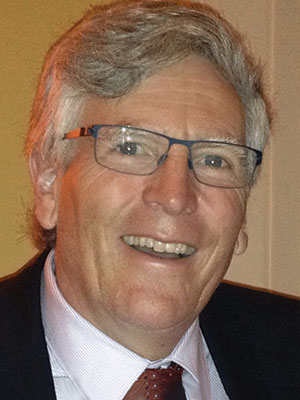
Knowledge about gout’s pathogenesis and treatment targets is changing. Half a decade of new research is upending what clinicians thought they knew about corticosteroids, colchicine, NSAIDs, and interleukin 1 inhibitors. New treatments are already a reality, and more are on the way.
“The biggest surprise to many rheumatologists is just how many therapeutic targets and biomarkers there are in gout that we haven’t yet explored,” said Robert Terkeltaub, MD, Professor of Medicine at the University of California, San Diego, where he is Section Chief of Rheumatology at the Veterans Administration Medical Center. “Researchers are finding a number of new ways whereby the inflammatory response in gout is either primed or dampened that are potentially tractable in managing the prevention and treatment of gout.”
Dr. Terkeltaub will review some of the novel anti-inflammatory strategies in gout during Gout: Pathogenesis and Therapeutic Targets on Sunday from 1:00 – 2:00 pm in Room B304-B305 of Building B of the Georgia World Congress Center. Peter Lipsky, MD, Co-Founder of AMPEL BioSolutions, a contract research organization based in Charlottesville, VA, will discuss aspects of urate biology and treatment of refractory gout.
One of the oldest documented diseases — with clear descriptions of gouty arthritis of the big toe from Egypt in 2600 BCE — and once thought of as a disease primarily of the over-indulgent wealthy, gout is now a widely prevalent disease. It is mediated not only by diet and lifestyle, but in the majority of patients, by prevalent metabolic and renal and cardiovascular comorbidities.
The disease is characterized by the deposition of urate crystals precipitated from uric acid. As part of the recent evolution in understanding of the pathogenesis of gout, experts recognize gout to be driven in large part by macrophages via the NLRP3 inflammasome-interleukin 1 pathway. Additional novel pathways will be discussed, including the involvement of metabolism and adaptive immunity mediators.
Traditional treatments focus on reducing uric acid concentrations by targeting xanthine oxidase or urate transporters. The pain resulting from gouty flares is usually treated with NSAIDs, colchicine, and corticosteroids.
“We all know that our current treatments are imperfect,” Dr. Terkeltaub said. “We see an improvement rate in the cardinal symptoms of pain of about 50% from baseline at 48 to 72 hours in most clinical trials. We can do better than that.”
Many newer therapeutic approaches focus on the interplay between metabolism and epigenomic changes in the inflammatory response in gout. AMP-activated protein kinase (AMPK) normally plays an important role in cellular energy homeostasis, but it is also an important regulator of the inflammatory response in gout, Dr. Terkeltaub said.
Several new agents are in development that directly target the NLRP3 inflammasome, he added. There are also potential new approaches and biomarkers related to alternative mediators that impact on more than the NLRP3-interleukin 1 pathway and may determine tophacaeous disease, erosions, frequent flares, and other phenotypic traits in gout.
Choline metabolism, among other pathways important in gout, is modulated by AMPK. AMPK, working partly through the epigenome, also plays a role in innate immune memory, affecting the development and course of gout as well as the highly variable response of gout flare symptoms to uric acid lowering therapy.
“We have better ways on the horizon of predicting who is going to respond to therapy, who is going to respond well, and who is going to get worse in terms of inflammatory activity with urate lowering therapy,” Dr. Terkeltaub said. “We are on the path to more therapies and, more importantly, more individualized therapies using potential biomarkers to predict and prevent gouty inflammation.”
